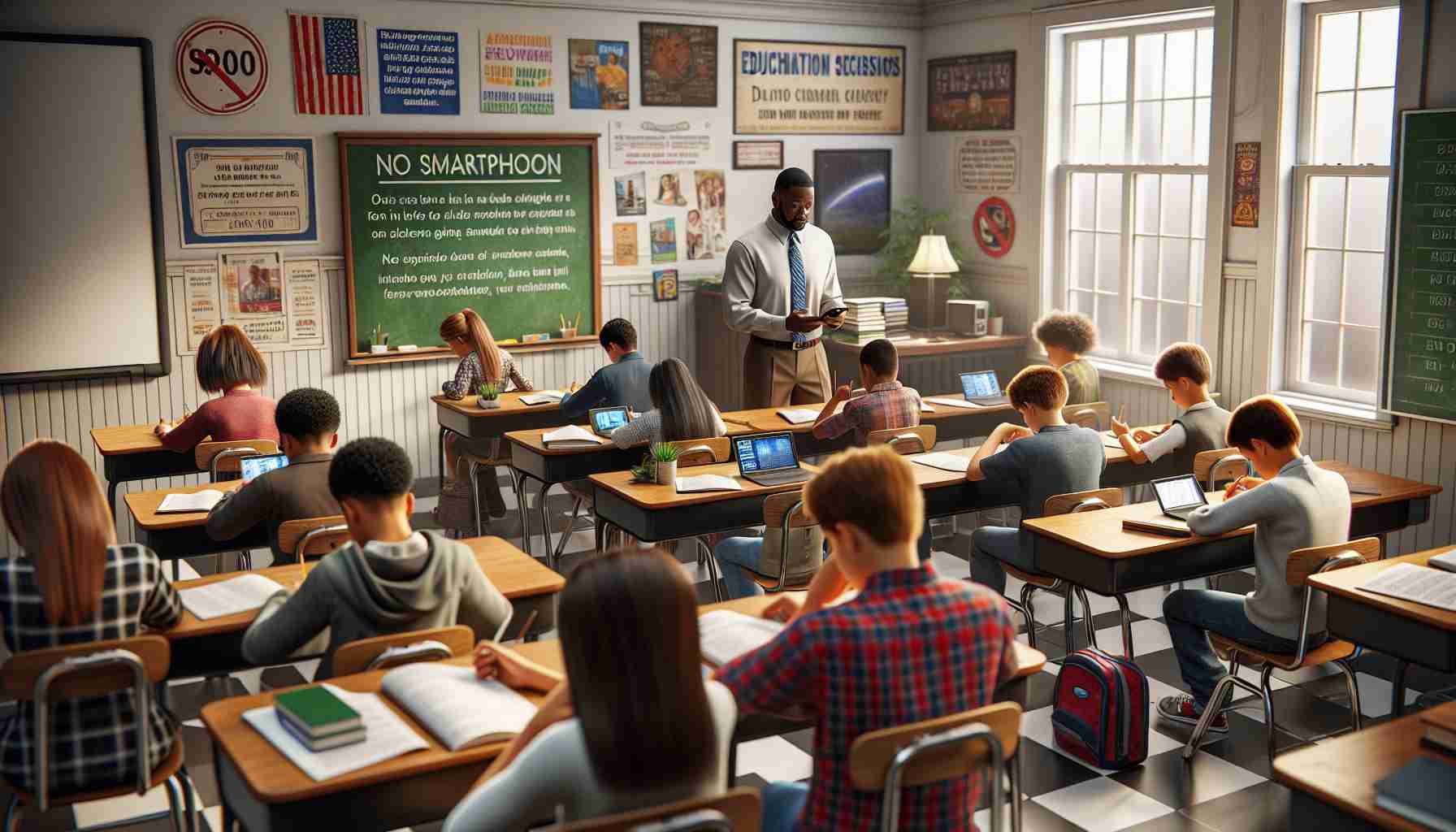In a noticeable shift in classroom dynamics, Melissa Farley’s math class at University High School has eliminated the distraction of smartphones during lessons. Instead of students reaching for their devices, they are deeply engaged in polynomial factoring, utilizing traditional methods like notebooks and calculators.
West Virginia schools are increasingly imposing restrictions on smartphone use in an effort to refocus student attention on their studies. With distractions from constant notifications and social media, educators, like Farley, have recognized the challenge of competing for students’ engagement amid digital interruptions.
Monongalia County Schools is one of several districts adopting strict policies this academic year. Remarkably, Farley observed a significant improvement in her students’ performance on recent assessments, attributing this success to the absence of smartphones. Students are not only participating actively but also seeking help and clarification—a stark contrast to previous years.
Students like Daniel Grabo acknowledge the effectiveness of this policy, explaining that it helps maintain concentration. Another senior, Ashley Wankey, appreciates the enforced separation from her phone, allowing her to stay focused on her work without succumbing to distractions.
As the trend to regulate phone access grows nationally and globally, educators are optimistic that these measures will foster academic success and strengthen interpersonal connections among students. With structured environments, schools aim to create a more productive and engaging learning atmosphere, minimizing the impacts of technology on education.
Enhancing Focus: Tips and Facts for Managing Smartphone Distractions
As West Virginia schools tighten smartphone restrictions to improve student focus, similar strategies can be applied in various aspects of life, work, and school. Here are some practical tips and interesting facts that can help anyone navigate the challenges posed by distractions in our tech-savvy world.
1. Set Specific Tech-Free Times:
Placing boundaries on smartphone usage can significantly boost productivity and focus. Designate specific hours during your day where you refrain from checking your phone, similar to the enforced classroom policies seen in West Virginia schools. For instance, consider starting the day with an hour of “phone-free” time to prioritize your tasks without distractions.
2. Create a Distraction-Free Study Environment:
Just as students at University High School have found success with traditional learning tools, you can cultivate a space that minimizes interruptions. Find a quiet area free from notifications and clutter, allowing for deeper concentration. Consider using notebooks or physical planners that help eliminate the urge to check your phone.
3. Use Technology to Your Advantage:
While limiting smartphone use is essential, consider utilizing technology to support your focus. Apps that encourage mindfulness and productivity can help manage your time effectively. For instance, try using timers for study sessions, since techniques like the Pomodoro Technique can enhance your focus significantly.
4. Engage in Mindful Breaks:
Taking regular, technology-free breaks can refresh your mind. During these breaks, engage in activities like stretching, walking, or conversing with friends. This can foster more profound human connections, much like the interpersonal ties nurtured in the classroom without smartphones.
5. Foster Accountability and Collaboration:
In the classroom, students are encouraged to seek help and collaborate with peers. Similarly, forming a study group or accountability partnership can enhance your focus. Discussing concepts, sharing challenges, and celebrating successes with friends can create a supportive environment that keeps distractions at bay.
6. Understand the Impact of Distractions:
Numerous studies show that multitasking with technology can decrease productivity by as much as 40%. Understanding this helps reinforce the merit of tech restrictions, encouraging you to adopt a more focused approach both in school and professional settings.
7. Reflect on Your Progress:
Take time to evaluate how smartphone restrictions or reduced usage affects your focus and performance. Keeping a journal of your daily experiences can help identify trends over time, helping you adapt your strategies effectively.
As educators implement policies to promote academic engagement, it’s essential to explore similar approaches in everyday life. With intentional effort and strategic choices, anyone can enhance their focus, whether in a classroom, office, or at home.
For more insights on fostering environments that promote focus and minimize distractions, visit the Education World.






















